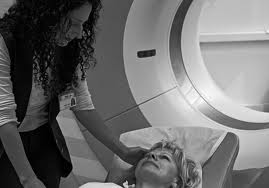Hearing those words, “You have cancer,” is one of the most scary phrases to have ever been heard by the human ear.
Your thoughts turn to your children and you wonder who is going to take care of your kids? You think of your husband and how he will take care of himself without you? And you wonder who is going to be rummaging through your closet? It’s not fair. You eat well. You exercise regularly. You get your annual mammogram. This isn’t supposed to happen to you. You’re a good person.
Cancer does not discriminate. Cancer just doesn’t. And no, it ain’t fair.
But we can help. When it comes to cancer, we don’t fight fair. We can beat cancer on our own terms.
But you want to know what you are up against. ”What is cancer and how am I going to beat it?”
My videos can help explain, but in short, the prognosis of breast cancer is based on how aggressive the cancer is, which can be assessed by its anatomy and biology.
The anatomy of breast cancer is also called its Stage. The Stage of breast cancer is related to its size and location. Smaller tumors are generally less aggressive and so you want to know, “Is the tumor less than 2cm? Is it less than 5cm?” And as for location, is the cancer only in the breast? Or has it spread to the lymph nodes in your armpit, in which case it would be more aggressive? The larger the tumor the greater the likelihood that the cancer has learned to escape the breast and spread elsewhere.
Likewise, if the cancer has learned to spread to the lymph nodes under your arm, the more likely it is to have spread elsewhere in your body. Stage 1 and Stage 2 breast cancers, those that are small have not spread to a great degree to the lymph nodes, are “early” breast cancer and ones that can be treated with a high expectation of success.
The biology of cancer refers to the behavior of the cancer. Regardless of size and location, tumor biology can predict the ability and likelihood that the tumor has spread. First, we look at the tumor under the microscope and assign a grade, often called the Nottingham Score. A Grade 1 tumor is more favorable, whereas a Grade 3 tumor tends to be more aggressive. Secondly, we measure the receptors for estrogen (ER), progesterone (PR) and Her2 on the tumor.
If the tumor has the receptor for Her2, then the tumor is quite aggressive, but fortunately we have excellent targeted therapies against Her2+positive tumors and women with Her2+positive tumors can do quite well today. If the cancer does not have the receptors for estrogen (ER), progesterone (PR) or for Her2, the tumor is considered “Triple Negative.” These tumors are usually quite aggressive and we do not have many options for treatment after surgery. Still, the combination of surgery and chemotherapy can be successful in treating Triple Negative Breast Cancer.
In summary, you want to know the following about the tumor:
- Size (<2cm, 2-5cm or >5cm)
- Lymph Node Status (Is the tumor already in the lymph nodes?)
- Grade (1, 2, 3)
- ER and PR (0%-99%)
- Her2 (positive or negative)
Most favorable tumors are small (<2cm), not in the lymph nodes, Grade 1, ER+, PR+ and Her2-negative.
The more aggressive tumors are large (>5cm), in the lymph nodes, Grade 3, ER-, PR-, and Her2-negative.
After the shock of hearing those words that shall not be spoken, it is important to ask your physician the size, grade, lymph node status and receptor status of the breast cancer. Then you are ready to engage and defeat your breast cancer.

